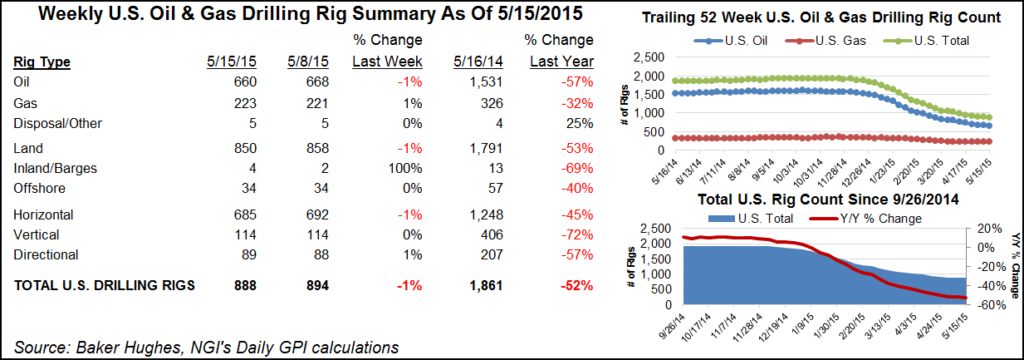U.S. GOM Adds Two Rigs, But Overall Decline Continues
Two rigs returned to the U.S. Gulf of Mexico (GOM) in the latest count of active drilling rigs by Baker Hughes Inc. released Friday (Sept. 25). That brings the GOM tally to 31, still way off from its year-ago level of 59.

In response to the decline in crude oil prices since mid-2014, the number of active offshore rigs has declined worldwide, dropping close to 20%, the U.S. Energy Information Administration (EIA) said in a recent website posting. There were 304 offshore rigs operating worldwide in August 2015, down from 377 in August 2014.
“During this period, the number of active offshore rigs in the U.S. Gulf of Mexico dropped more rapidly, falling by 46%,” EIA said. “Over the past 15 years, the U.S. GOM’s share of active offshore rigs worldwide has declined significantly — from almost half of all active offshore rigs worldwide in 2000 to less than 20% since 2008.”
EIA said that technology advancements accelerated the development of the deepwater, and the consequent move by drillers to deeper waters prompted the departure of rigs operating in the shallow waters of the U.S. GOM.
“Natural gas prospects in the U.S. GOM have also become less profitable as the largely shale-driven increase in onshore natural gas supply contributed to decreases in U.S. natural gas prices,” EIA said.
Overall, the decline in the U.S. rig count decelerated for another week, to a drop of just four rigs.
During the previous week, a net of six rigs quit (see Daily GPI, Sept. 18), and the week before that the net U.S. loss was 16 rigs (see Daily GPI, Sept. 11). While the decline might be slowing, there’s further to fall, according to analysts at Wunderlich Securities Inc.
In the United States, four oil rigs were dropped during the latest report period, and one gas rig was lost, leaving the working tallies at 640 and 197, respectively. Eleven horizontal rigs left the game while four vertical rigs were added.
Canada saw a net decline of six rigs to bring the North American contraction to a loss of 10 rigs. In Canada, four oil rigs were lost and two gas rigs were stacked.
Across the leading U.S. plays, the Eagle Ford and Haynesville shales, and Permian Basin each lost three rigs in the latest count, making them the biggest decliners. Texas saw the largest decline among states, having lost a net of two rigs.
© 2024 Natural Gas Intelligence. All rights reserved.
ISSN © 1532-1231 | ISSN © 2577-9877 |
